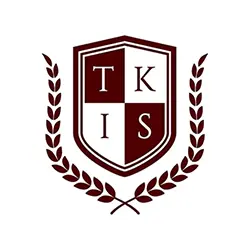Instead of the frantic rush to catch the school bus or train, students are calmly setting up their study spaces at home. The shift to online schooling has changed many aspects of education, one of which is how the school day is structured. A question many ponder upon: just how long does online school take each day?

The Flexibility of Online Schooling
Unlike traditional brick-and-mortar schools where the day starts promptly at 9 am and concludes at 3:30 pm, online schooling brings with it a certain elasticity. While the total hours of academic engagement might parallel traditional schooling, the distribution of these hours can vary.
Synchronous vs Asynchronous Learning
Online schooling often blends synchronous (live) and asynchronous (self-paced) sessions. Synchronous sessions mimic the classroom experience where students and teachers interact in real-time. These can be scheduled lectures, group discussions, or tutor-led lessons.
On the other hand, asynchronous sessions offer students the autonomy to complete assignments, watch pre-recorded lectures, or engage in interactive quizzes at their own pace.
For many British online schools, including ours, the balance between synchronous and asynchronous sessions is finely tuned to ensure students get the best of both worlds.
The Average Online School Day
While the flexibility of online education is its strength, structure is undeniably essential. Most online schools, therefore, adopt a semi-structured approach.
Morning Assembly: Often, the day might start with a virtual morning assembly around 9 am, a nod to the quintessential British school tradition. This lasts about 15 to 30 minutes.
Synchronous Sessions: Typically, there might be 3 to 4 live sessions scheduled. Each of these can last between 45 minutes to an hour.
Breaks: Just like in traditional schools, breaks are vital. There might be a short 15-minute break between sessions and a longer lunch break around noon.
Asynchronous Learning: Post-lunch, students may have 2 to 3 hours dedicated to self-paced learning. This is when they’d watch pre-recorded lectures, complete assignments, or engage in group projects.

Homework and Assignments: As with any school, there’s homework! Depending on the year group and the subject, students might spend another 1 to 2 hours on this.
Adding it all up, students might be engaged in academic activities for about 5 to 7 hours a day. But remember, this doesn’t mean they’re glued to the screen for this duration. Online learning is a blend of screen time, reading, writing, and hands-on activities.
Our School’s Approach
In our esteemed institution, we strive for a balanced approach. Understanding the challenges and benefits of online learning, our timetable is crafted to ensure students have ample live interactions with tutors, peer engagement, and personal study time. We also understand the importance of extracurricular activities. Hence, our school often organises virtual clubs or activities post-academic hours, be it a digital art club, an online chess match, or even a virtual British history quiz!
Online schooling is not about replicating the brick-and-mortar school experience in the digital realm. It’s about reimagining it to suit the modern learner. The beauty of online schooling lies in its flexibility, allowing for a personalised learning journey. While the duration might seem akin to traditional schooling, the experience is distinct, innovative, and tailored to the individual.
For parents and students considering this mode of learning, it’s essential to remember that online schooling is not a diminished form of education but rather a contemporary adaptation of it. And as with all adaptations, it brings its unique blend of challenges and opportunities, each crafted to prepare students for a world that is increasingly digital, global, and interconnected.
Taking a Breather: The Dynamics of Pausing Online Schooling in the UK
Ah, the beauty of Britain. A realm of constant innovation set against a backdrop of history. A nation known for its revolutionary spirit, as well as its deeply entrenched traditions. It is in this rich tapestry that the concept of online schooling finds itself woven, modernity juxtaposed against the old. As with any new venture, it prompts an array of questions. One such query, echoing in the hallways of our digital corridors, is: “Can students take a break from online school?”
The Concept of Flexibility
The very idea of online schooling is anchored in flexibility. Unlike traditional establishments that are ruled by the bell, online schools, such as ours, celebrate the ability to learn at one’s own pace. This is not to suggest a laissez-faire attitude but to highlight the elasticity of digital learning.
The British Stance on Academic Breaks
In the UK, traditional schooling is punctuated with half-term breaks, Easter holidays, and the much-anticipated summer holidays. These intervals are not mere tradition but are anchored in an understanding of the necessity of rest. The question then arises: is online schooling any different?
Sabbaticals in Online Learning
Technically, online learning platforms have the capacity to be always accessible. You could, in theory, log in on Christmas Day or during the wee hours of a bank holiday Monday. However, this doesn’t imply that students are perpetually tethered to their screens. The system’s perpetual accessibility should be viewed as a means to accommodate diverse schedules, rather than as a mandate for non-stop learning.
Our institution, championing the ethos of holistic development, recognises the vitality of breaks. Be it to rejuvenate, to travel, to delve into a new hobby, or simply to catch one’s breath amidst the rigours of academia. Thus, while our platform remains accessible, we maintain and advocate for structured term times and breaks, emulating the rhythm of traditional British schooling.
How to Navigate Breaks in Online Schooling
Communicate: If you feel the need for a break, it’s imperative to communicate with tutors and the academic team. Transparency ensures that your academic progress remains uninterrupted.
Plan: Unlike impromptu holidays, planned breaks allow you to work ahead or catch up without feeling overwhelmed.
Stay Engaged: Even during breaks, our platform offers a plethora of resources. From interesting reads to engaging quizzes, it’s a treasure trove for the curious mind.
Reintegrate Smoothly: Post your break, reintegrate into the academic fold with the help of recap sessions and tutor guidance.

The Well-being Argument
Britain has always been at the forefront of championing mental well-being. The recent focus on mental health has only intensified the discussion around academic pressures and their implications. In this light, the ability to take strategic breaks during online schooling is not just a luxury but a necessity. Our school, with its finger on the pulse of modern educational needs, ardently believes in the restorative power of breaks, ensuring that students have the space to rejuvenate.
To break or not to break, that might be the question. But in the world of online schooling, the answer resonates with understanding and flexibility. The new age digital learning model, especially as it is sculpted in our esteemed institution, is not about chaining students to a relentless routine but about crafting a journey that recognises the importance of pauses. After all, as the old British saying goes, “Every once in a while, one must stop to smell the roses.” And in the digital realm, this adage holds truer than ever.




